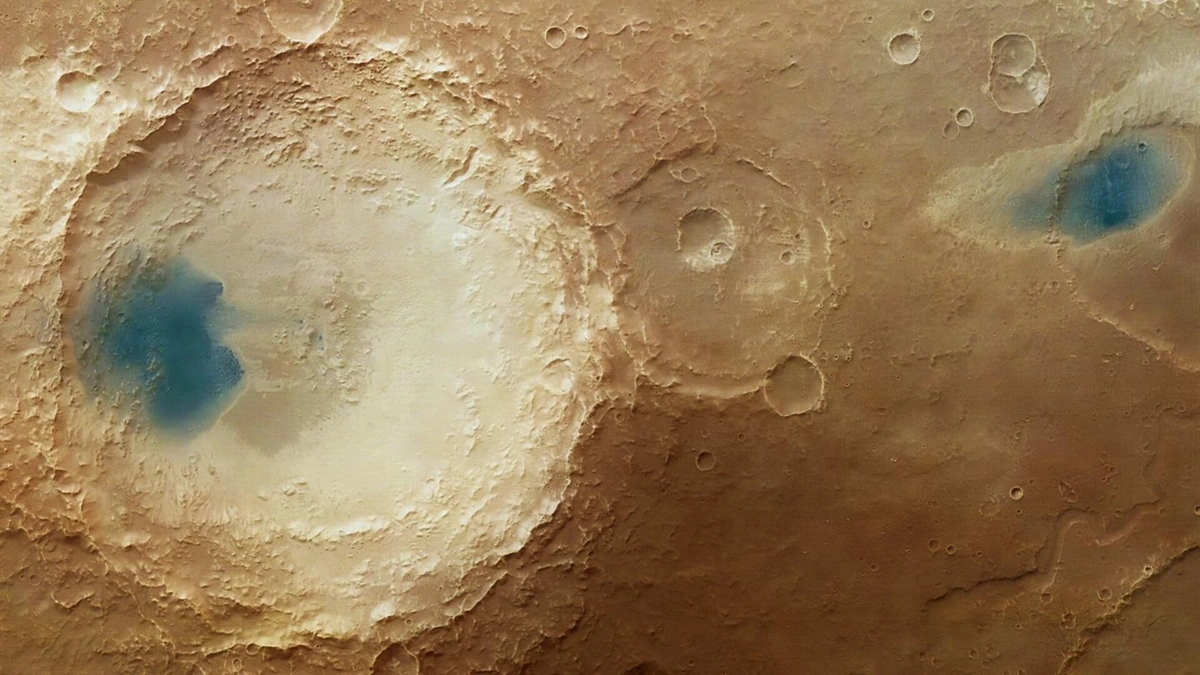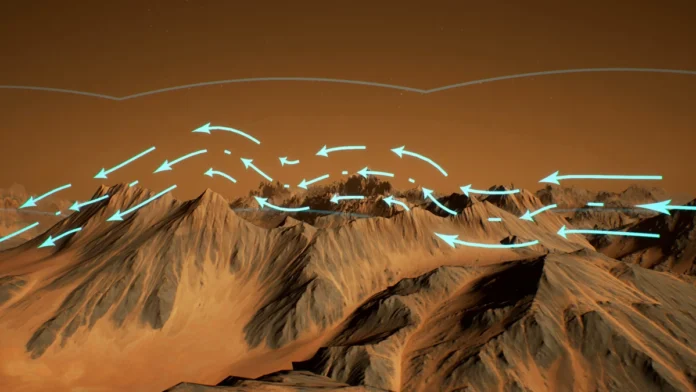Here’s the thing about Mars: we think we know it, but it keeps throwing curveballs. We’ve got rovers trundling across the surface, satellites orbiting, and tons of data pouring in. And yet, the Red Planet still manages to surprise us. This time, it’s all about the wind. More specifically, Mars winds and some unexpectedly powerful mini-tornadoes tearing across the landscape.
The “Why” Behind Martian Dust Devils

So, why does this matter? We know Mars has dust devils – those swirling columns of dust that look like miniature tornadoes. But a recent study, published in ” Icarus ” (https://www.sciencedirect.com/journal/icarus), reveals that these Martian whirlwinds are far more potent than scientists previously thought. And that has serious implications for everything from rover operations to future human missions. But, the real question is how strong are these Mars winds?
See, these aren’t just cute little dust devils kicking up some Martian dirt. They’re potentially capable of lofting significant amounts of dust into the atmosphere, which impacts the planet’s climate and weather patterns. Think of it like this: on Earth, volcanic eruptions can have global consequences because they inject ash and gases high into the atmosphere. Martian dust devils, while smaller, could be playing a similar role on a smaller scale. So, it’s not just about the pretty pictures; it’s about understanding a key driver of Martian weather. Let me rephrase that for clarity – these dust devils are like tiny, mobile weather factories!
How These Martian Mini-Tornadoes Form
Now, how do these mini-tornadoes form, anyway? It’s all about the temperature differences. The Martian surface heats up during the day, and that warm air rises. When that rising air encounters cooler air aloft, it can create a swirling vortex. If conditions are just right, that vortex picks up dust and becomes a visible dust devil. This process is very similar to how dust devils form on Earth, especially in desert environments. But on Mars, the lower atmospheric pressure and different composition of the atmosphere mean that these dust devils can behave in unexpected ways. A common mistake I see people make is thinking Mars is just a cold, dead rock. It’s dynamic, it’s changing, and the Martian atmosphere plays a crucial role in shaping its surface.
But what fascinates me is the sheer scale of these things. Some of these dust devils can tower hundreds of meters high, leaving dark streaks on the surface as they churn up the lighter-colored dust underneath. These streaks are visible from space, and they provide valuable clues to scientists studying the movement of dust and sand across the Martian landscape. It all comes down to understanding the dust devil dynamics.
Implications for Future Mars Exploration
So, how does this impact future missions? Well, for starters, it means we need to be extra careful about protecting our equipment from the abrasive effects of Martian dust. The rovers currently on Mars, like Perseverance and Curiosity, are designed to withstand dust storms. However, these unexpectedly powerful dust devils could pose an additional challenge. Dust can get into the rovers’ mechanisms, scratch their solar panels (reducing their power), and generally cause havoc. Think of it like sand getting into your camera lens – annoying, right? Now imagine that on a planetary scale.
Moreover, understanding the frequency and intensity of these dust devils is crucial for planning future human missions. Astronauts will need to be aware of the potential risks posed by these storms, and they’ll need to have strategies in place to protect themselves and their equipment. This might involve seeking shelter during dust devil activity or designing habitats that are resistant to dust intrusion. It is really important to understand Martian weather patterns.
Consider this: according to an article on space.com (https://www.space.com/), the InSight lander’s solar panels have been significantly impacted by dust accumulation, highlighting the ongoing challenges of operating in the Martian environment. Therefore, we cannot ignore Martian dust storms.
But, all is not doom and gloom. The increased strength of the winds also suggests the possibility of harnessing this energy in some way in the future. Think of it like Martian wind energy. Okay, it’s probably decades away, but hey, a girl can dream!
What the Future Holds for Martian Wind Research
What’s next? Scientists will continue to study Martian dust devils using data from rovers, orbiters, and computer models. They’ll be trying to understand what factors control the formation and intensity of these storms, and they’ll be working to predict how they might change in the future. A better understanding of wind patterns on Mars is crucial. I initially thought this was straightforward, but then I realized just how complex the Martian atmosphere is!
This research is not just about Mars; it’s also about understanding our own planet. By studying the processes that drive weather and climate on other worlds, we can gain valuable insights into how these processes work on Earth. After all, Earth is the only planet we’ve got (for now), and we need to take care of it. One thing you absolutely must double-check is that you have the most up-to-date scientific understanding before forming an opinion.
And, don’t forget, Mars exploration is a global effort. Scientists and engineers from all over the world are working together to unlock the secrets of the Red Planet. It’s a testament to human curiosity and our desire to explore the unknown.
Speaking of unknowns, that’s where this whole thing is going to lead. As we venture deeper into the solar system, as humans begin their journeys, we will likely experience this phenomenon again. And what a sight it will be! You can learn more about these discoveries at This Link .
Frequently Asked Questions
What exactly is a Martian dust devil?
It’s basically a small, swirling column of dust that forms when warm air rises from the surface and interacts with cooler air above. Think of it as a mini-tornado on Mars.
Are Martian dust devils dangerous to rovers?
Potentially, yes. They can deposit dust on the rovers’ solar panels, reducing their power output. They can also get into the rovers’ mechanisms and cause damage. You can also get more details here: Visit this page .
How do scientists study Martian dust devils?
They use data from rovers on the surface, orbiters in space, and computer models to understand their formation, behavior, and impact on the Martian environment.
Could humans ever harness the energy of Martian winds?
It’s a long shot, but theoretically possible. However, the technology to do so is still decades away.
Are there dust devils on other planets?
Dust devils have been observed on Earth, Mars, and possibly even Venus. They are common in environments with strong temperature gradients.
So, next time you see a picture of a Martian dust devil, remember that it’s not just a pretty sight. It’s a window into the complex and dynamic processes that shape the Red Planet. And who knows, maybe one day, we’ll be able to harness those winds to power our Martian colonies. Just remember to pack a good dust mask!

